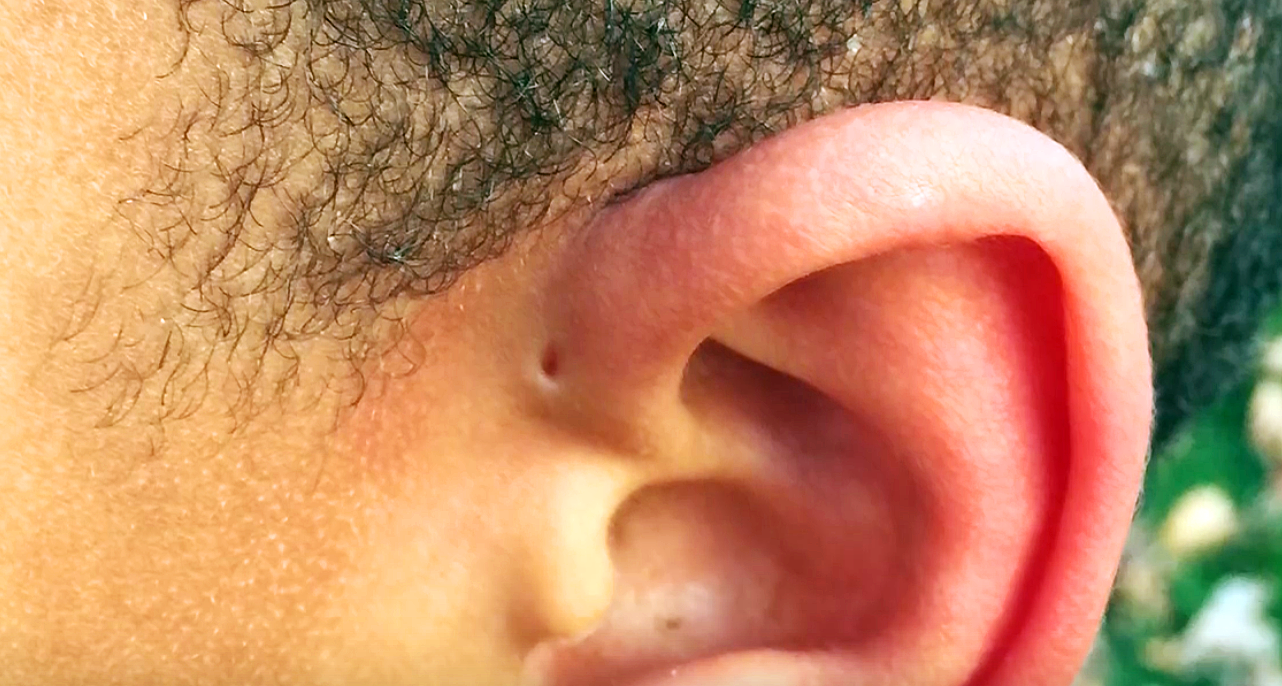Have You Ever Noticed This Tiny Hole Above Someone’s Ear? This Is The Strange Reason Why It’s There.
If you have ever noticed that someone has a tiny hole above their ear, that looks like it could be a misplaced dimple, you may have assumed that it was from some odd type of piercing. However, what you actually picked up on is a body feature that happens to be a naturally occurring mutation in some people. And while the little hole is not all that common in America, it’s more prevalent than you’d imagine it to be.
Those tiny holes are best known as preauricular sinuses and they are located right around the junction where the top of the external ear cartilage meets the face. They are considered birth defects and get passed down from one generation to the next. The holes can occur on one or both ears, with the right side being where they are more frequently found. For the most part they are harmless, but just like other types of sinuses, they can become infected and require treatment. Some may also form cysts and in rare cases draining or removal is the best option.
Why the holes are there in the first place and for what purpose remains mostly a mystery. The accompanying Business Insider video mentions an interesting theory put forth by Neil Shubin, an evolutionary biologist, who says that they could very well be an ‘evolutionary remnant of fish gills’. It’s an interesting idea and makes sense, but there could just as easily be another explanation for the holes.
The chances of a person being born with a preauricular sinus dimple varies across geographical and ethnic lines. Researchers in Korea found that the small dents are most common among Asian and African populations, where between 4-10% of people may have them. In comparison, less than 1% of Americans and those born in the UK are affected, which is far fewer. In Ethiopia, the teeny holes are considered lucky to have because they’re believed to bring people money and wealth.
If you didn’t know what those strange ear holes were before, now you know the basics about the auricular sinus. Please pass this on and help share it so that more people can learn about them and be informed!
Please SHARE This With Family and Friends





